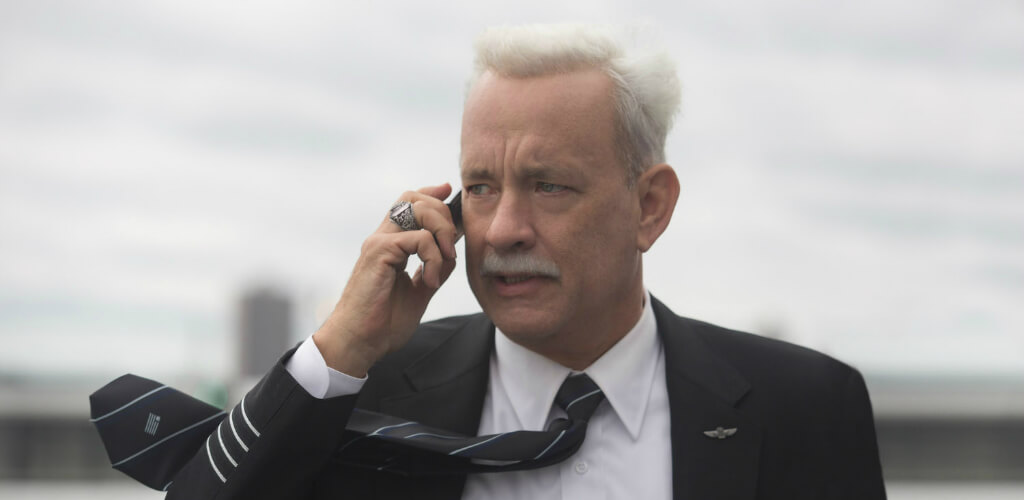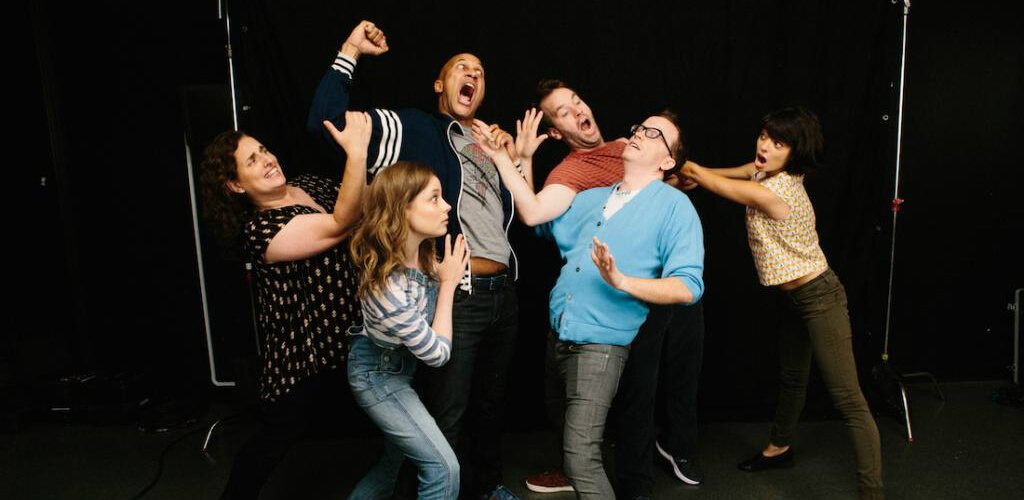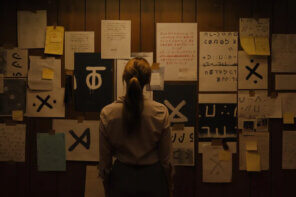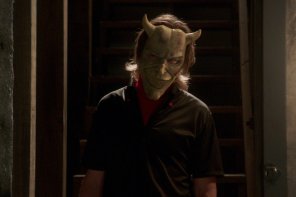At Cinema Faith, we wish we could provide feature-length reviews for every movie that hits theaters. Unfortunately, some films fall through the cracks. Welcome to another edition of Mini-Review Roundup where we present smaller reviews of several movies at once.
This month we review Blair Witch, Southside with You, Sully, and Don’t Think Twice.
Blair Witch

I remember sleeping over at a friend’s house in 1999 (one of the best years in cinema). We were down in the basement playing video games when my friend’s older brother came home with a group of 20-somethings. Their faces were pale. My friend noticed and made a joke about something scary behind them. They all jumped out of their skin. They’d just gotten back from a horror movie — some film about a witch.
This is where my fascination with horror movies began. How could a movie be that scary? These were guys who spent their Saturdays doing skateboard stunts and jumping off the roof of their house. I remember staring at the newspaper ad for The Blair Witch Project in wonder: just a simple picture of that creepy stick figure with quotes from critics declaring it the “scariest movie ever made.” I had to watch it, and eventually I did. No, it wasn’t the scariest movie ever made, but it was unlike anything I’d seen before. The Blair Witch Project was the first to take found-footage to the masses. The film felt unnervingly authentic. Had there not been credits at the end, the footage could have been mistaken for the real thing.
And now we have the sequel. (Yes, I’m aware there was already a sequel. But there isn’t a living soul who wants to remember that Book of Shadows: Blair Witch 2 was ever made.) Blair Witch picks up right where the original left off. Literally. A new young cast watches the end of the first movie on YouTube. One of the leads, James, is the brother of Heather — the girl with the ski cap from the 1999 version that says how scared she is as snot drips down her nose. James wants to find out exactly what happened to his sister, and he’s decided to lead an expedition back into those haunted woods to find out more. He’s joined by friends Lisa, Ashley, and Peter. And don’t worry, they’re prepared. They’ve got GPS, drone cameras, flashlights, and walkie-talkies. What could possibly go wrong?
So is the new Blair Witch a better movie? Yes and no. On the one hand, much more happens here than the original film, which was really just a bunch of people freaking out and yelling at each other. There are actual supernatural happenings this time and gross-out effects. Blair Witch has moments of terror that far outweigh anything in The Blair Witch Project. And yet, looking at the two films as a whole, The Blair Witch Project is still the superior film. The grainier footage and focus on emotion over effects adds up to a raw power that Blair Witch can’t match. Blair Witch feels like a Hollywood film. The Blair Witch Project feels like what the found-footage genre is supposed to feel like — scraps of footage pieced together by the local police department.
Horror films are always hard to critique. They aren’t out to win Oscars. They just want to scare people. Blair Witch more than accomplishes that modest goal. This is a genuinely scary movie that will keep you out of your basement for at least a night or two. But shouldn’t our standards be higher? Horror films like The Shining and It Follows have proven that art and horror can co-exist. Movies can be scary and still contain great writing, acting, and directing. In fact, artistic horror movies often leave a deeper mark than the cheap thrills of lesser works. People are still talking about The Blair Witch Project 17 years later because the makers of that film set out to create something that had never been done before. Blair Witch is just another conventional horror flick. I tensed up at all the right moments, but a week later it’s already forgotten.
Grade: B
Southside with You

The timing of Southside with You couldn’t be better. Barack Obama has been the President of the United States for eight years, and the time has come to pass the baton. This is our moment to reflect on the contributions he’s made, to consider his strengths and faults, and ultimately, to say goodbye. What better way to do that than to go back to the beginning. Imagine a film that captures the soul of Obama before his presidency — the essence of who Barack and Michelle were before the weight of the world was on their shoulders. Unfortunately, Southside with You is not that film.
On the surface, everything is in order. We do go back to the beginning. The film takes place in Chicago, the summer of 1989. Michelle is 25 years old getting dressed up for a date, though she scolds her family for calling it that. In her mind, she’s simply meeting a colleague. Her dad asks for his name before she leaves. “Barack Obama,” she says. “Barack who?” he asks. Yes, there was once a time when no one knew the name Barack Obama.
And there was once a time when Barack himself was nothing more than a Harvard Law Student about to spend the day with a pretty girl named Michelle. His car is old and trashed. There’s even a hole in the floor where you can see the road as you drive. Barack is also a smoker, which Michelle immediately notices as she gets into his car. This is by no means love at first sight. Michelle wants to keep things professional between them to avoid her being seen as the office floozy, but Barack is smitten. He convinces her to check out a black art exhibit at the local museum, and that’s how they begin a day of talking and sharing through the streets of Chicago.
Parker Sawyers (Barack) and Tika Sumpter (Michelle) have their impressions down to a science. Sawyers even employs the soft-spoken fillers Obama uses like “you know” before making a point. But that’s precisely the problem. These are great impressions, but not great characters. We never connect with them as people. I haven’t caught the Hamilton bug yet, but my wife listens to it around the clock. Last time I checked, Alexander Hamilton wasn’t a Puerto Rican rapper. Lin-Manuel Miranda is after more than an impression or re-creation of historical events; he’s after the soul of that moment in time, and in the process he makes history relevant and alive. Southside with You desperately needs a bit of that Hamilton magic. We needed more than mechanically correct impressions. We needed to feel two souls falling in love.
And yet somehow, the film remains watchable. Writer/director Richard Tanne exhibits a few moments of on-the-nose writing (a Barack speech about Chicago’s first black mayor somehow becomes a plea to keep our states united), but he nails the tone. The movie is beautifully shot with exquisite music and pacing. I especially loved the scene of Barack and Michelle in the black art exhibit. There’s a grace and warmth in the presentation there and throughout that covers a multitude of sins. And of course, there’s the raw power of knowing who these characters will become. At the end of the day, there are worse ways to spend two hours at the movies, but I can’t help lament what could have been.
Once its relevance has faded, Southside with You will no longer be remembered. But as for Barack Obama himself? I don’t think it’s too controversial to say, in light of the two candidates currently running for office, that his presidency will be looked back on with much greater fondness.
Grade: B-
Sully

You know Hollywood’s running out of ideas when they remake a film from four years ago. A pilot lands a plane in heroic fashion and then gets investigated for it by the National Transportation Safety Board (NTSB)! That’s the basic synopsis of both 2012’s Flight starring Denzel Washington and this year’s Sully starring Tom Hanks. I’m kidding about the remake, of course. The two movies may share a plot, but they are very different films. Flight is a character study about an alcoholic battling his demons. Sully is an inspirational story of heroism in the face of impossible odds.
Another marked difference between the two films is the incidents themselves. Flight was a fictional crisis with made-up characters loosely based on past airline crashes. Sully is the real deal. There really was a pilot named Chesley Sullenberger who had to make an emergency landing in the Hudson River in 2009. I faintly remember hearing the story, but in the age of the 24-hour news cycle the details are ancient history. I went in knowing virtually nothing about the incident, and that’s a good way to watch this film.
I can’t remember a movie that puts the viewer in the seat of an airplane more realistically than Sully. You are a passenger on Flight 1549. Every angle of the aircraft is covered — we roam from the passengers to the flight attendants to the cockpit. The sounds flow in and around us and we feel in white-knuckle horror what it’s like to crash land into that river. I can see this film being re-released in virtual reality someday. IMAX will have to do for now. There’s no question that the crash is worth the price of a ticket alone.
Unfortunately, the crash only takes up 1/3 of the film. The rest of the movie is butter spread too thin. Sully clocks in at a brisk 96 minutes, but it feels longer. There just isn’t enough story here to justify a feature film. To compensate, we’re shown Sully’s daydreams, flashbacks to his youth, clips of news coverage, and lots of talking. There are plot points involving the investigation into the crash, but even that feels forced. In the absence of a classic villain, the members of the NTSB become caricatures who treat Sully like a reprobate. I didn’t buy the portrayal for a second, and apparently the real NTSB didn’t either.
Sully is directed by Clint Eastwood who’s known for his no-nonsense approach to filmmaking. That’s proven both a blessing and a curse. In an age of over-wrought filmmaking, Eastwood’s to-the-point storytelling style can be refreshing. His musical scores (which he writes himself) are simple and elegant. He never lingers too long in a scene. This is a guy who gets the shot and gets out. However, it can also leave his films feeling tidy and soulless. The same can be said of the performances he gets out of his actors. Hank’s performance is solid as usual, but also inert. I have no doubt Hanks captured the real-life Sully’s tendency to contain his emotions, but that doesn’t make for an engaging character.
The part of Sully where emotions are on full display is in the immediate aftermath of the crash. Eastwood shines a spotlight on the best of the human spirit as all of New York comes together to save the crew from the frigid Hudson. Every life matters. No one gets left behind. If only the entire film could have carried this exuberant spirit. For the director’s cut, Eastwood should break new ground and decrease the film’s running time. There’s a 40 minute short in here that could win an Oscar.
Grade: B
Don’t Think Twice

I wish I had the guts to do improv. It looks so fun. Imagine going out into a crowded room with no script. Whatever happens that night will never happen again. Everything is spontaneous. There are no rules. Well actually, there are three rules. We’re introduced to them at the beginning of Don’t Think Twice. First: Say yes. When your improv partner comes up with an idea in the moment, don’t squash it — build on it. Second: It’s all about the group. Don’t hog the spotlight. This is a team sport. Third: Don’t think. The moment you put too much thought into the bit, all spontaneity flies out the window.
The improv group at the center of Don’t Think Twice is called “The Commune.” The troupe consists of six friends: Miles, Samantha, Allison, Lindsay, Jack, and Bill. They all have regular jobs to pay the bills, but where their hearts truly lie is under the spotlight of the improv scene. Nothing thrills them more than performing together. They goof around backstage, kiss a chintzy statue for good luck, and then head out on stage to ask the audience a question. The question is always the same: “Has anyone had a particularly rough day?” And whatever answer they get, they roll with it. Each person builds off the other for maximum laughs. This is teamwork at its finest.
But what the troupe is really after is a show called Weekend Live. This is a thinly veiled reference to Saturday Night Live, complete with the booming announcer voice and the New York City opening. For the group, Weekend Live represents the ultimate destination for their talents. They’re constantly on the lookout for scouts in the audience, and they regularly audition for the show. Then one day, Jack gets the magical phone call. This sends the troupe into a tailspin. Suddenly everyone questions their life, their talents, and whether they should call it a day on improv for good.
Don’t Think Twice is a good-natured movie that’s hard not to like. Everyone in the cast is lovable. The improv scenes are fun. The dialogue is witty. This is the perfect Saturday afternoon matinee. I just wish it was more than that. For a while, I thought it might be. The first act is a perfect blend of comedy and drama. We laugh out loud, and we also relate to these characters. But right around the time Jack gets his phone call, the tone takes a turn for melancholy and never fully recovers. All the zip and crackle from the first 30 minutes fades into a mournful hum. The movie is never boring, but it does get soggy at times. And the ending fails to bring things together in a satisfying way.
Mike Birbiglia writes, directs, and stars in the movie. He gives a fun performance as Miles and gets great work from everyone around him. Special mention goes to Keegan-Michael Key and Gillian Jacobs as Jack and Samantha, respectively. They feel the most fleshed out of the six-member troupe.
But what Birbiglia really captures is the feeling of striving for the “big time” in your craft. No matter what field we work in, there’s always something that feels like the ultimate destination. If only we had that job. If only we were that person. But by whose standards? Thankfully God doesn’t define success by likes, followers, paychecks, and ticket sales. We all know this, of course, but it’s still so hard not to play the game. 1 John 2:15 warns us not to love the world or anything in the world. We’re not supposed to love what the world values. We’re not supposed to worship success like the world worships success. Success in the Kingdom of God is washing feet. The first will be last, and the last will be first.
Jack gains the world in the eyes of his improv friends, but right away we see the tug on his soul. Birbiglia’s film may be uneven, but at least his heart is in the right place. Maybe for now, that’s enough.
Grade: B





